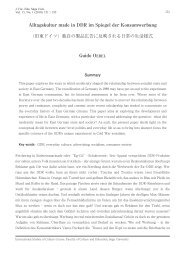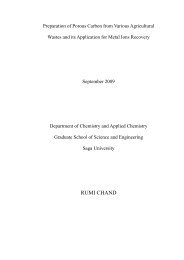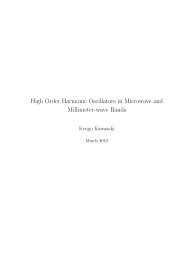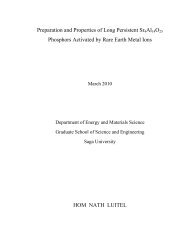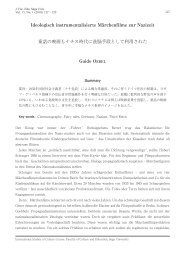ε (eV)
ε (eV)
ε (eV)
You also want an ePaper? Increase the reach of your titles
YUMPU automatically turns print PDFs into web optimized ePapers that Google loves.
states. In the Table 1.1 are presented the most commonly used chemisterilants<br />
[3,4,42,43]. Theireffectiveness depends essentially on the concentration of the<br />
reactive agent. Usually, this is interfering with microorganisms proteins or lipids<br />
creating also local membrane perforations. In the same time, a powerful damag-<br />
ing action is directed to the DNA’s structure through degradative and oxidative<br />
processes. Altogether these causes lead to the cell’s death [3].<br />
1.2.4 Sterilization by particle bombardment<br />
Sterilization by particle bombardment method usually involves beams of neu-<br />
trals or charged species. The most known killing agent is the beam of electrons<br />
having energies ranging from 3 M<strong>eV</strong> to 12 M<strong>eV</strong> [44-47]. This technology is not<br />
entirely new. Pioneering work in electron beam (E-beam) processing has began in<br />
the 1930 0 s. E-beam sterilization method was commercialized in the 1950 0 s. The<br />
procedure is similar to gamma rays irradiation in that it alters various chemical<br />
and molecular bonds of the contaminants through particles impact with objects<br />
to be sterilized [39-41, 44-46].<br />
1.2.5 Sterilization by plasma<br />
Theuseofplasmasoffers an original and more practical approach for steriliza-<br />
tion because of their properties [15-18]. The method basically consists in exposing<br />
the contaminated objects or surfaces to the plasma action. They are rich produc-<br />
9



